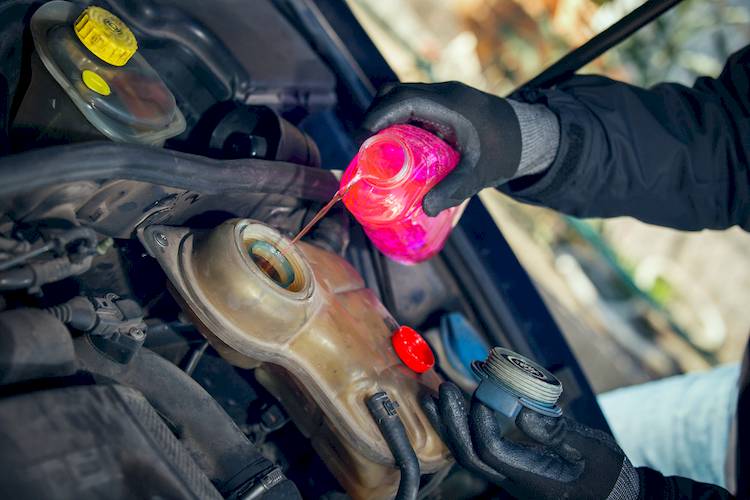

The coolant level sensor uses a moveable float device and a reed switch that senses when the radiator has low coolant. Once the sensor detects low coolant, the driver is alerted by a light illuminated on the dashboard. The coolant level sensor is located on the radiator or at the bottom of the expansion tank, depending on the make and model of your vehicle.
The coolant level sensor works with a float that contains a ring magnet. The ring magnet closes the reed switch inside when there is enough coolant in the radiator. Once the coolant drops to a certain level, the float follows the level, the reed switch is removed from the magnet, and contracts the reed switch open. This is when the Coolant light should illuminate on your dashboard.
When the coolant tank is filled to the correct level and the warning light is still illuminated on your dashboard, this may be an indication the coolant level sensor is going bad. If this happens, have a professional mechanic look at the vehicle to properly diagnose the problem. The coolant level sensor can be replaced if it is found to be the problem during inspection.
The magnet switch may fall off over time, the float may get stuck, or the wiring for the sensor may be shorted out. These are all things that can contribute to the sensor going bad. It is important to know when you need coolant in your vehicle, so if you let this problem go, you vehicle could start overheating because your coolant light is constantly on.
Since the coolant level sensor can go bad over time, it is important that you can recognize the symptoms that indicate the sensor needs to be replaced.
Signs the coolant level sensor needs to be replaced include:
- Coolant light is on but the reservoir tank is full
- The coolant level is low but there are no warning lights on your dashboard
The coolant level sensor is an important piece to making sure the overall function of your engine is running smoothly. Without the right amount of coolant, the vehicle may overheat and cause damage to the engine so this problem should be taken care of right away.



